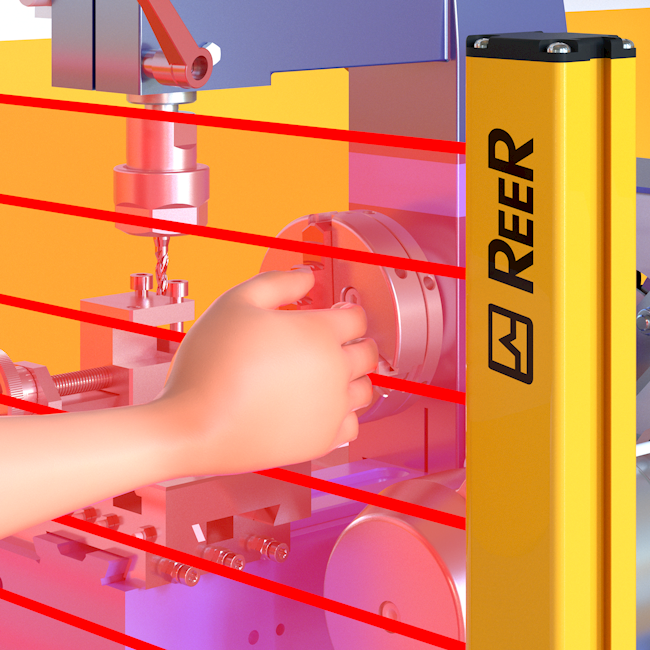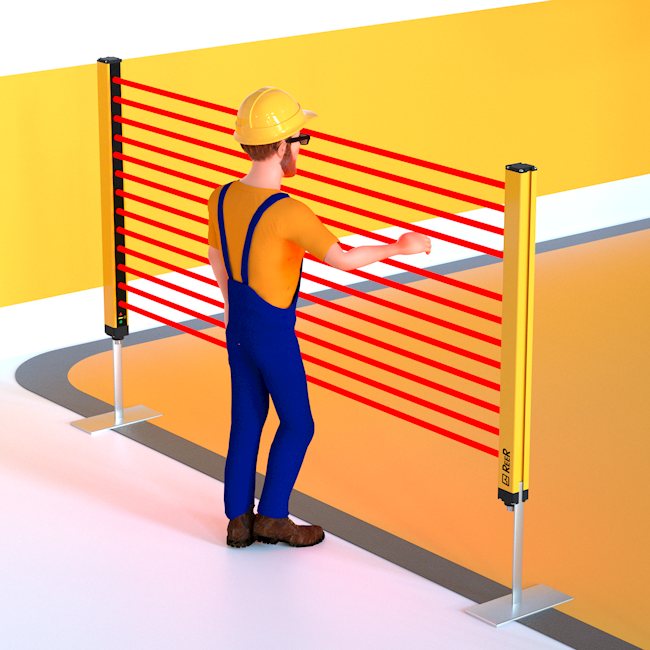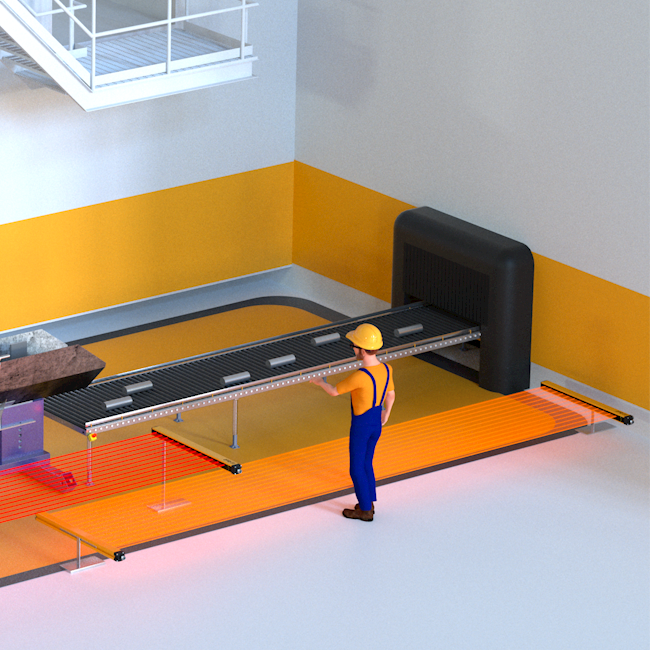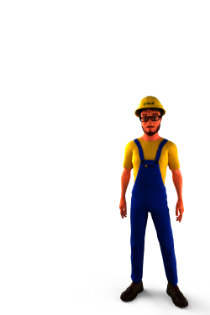Selection criteria
Definition of type of detection


Finger

Hand
Detection necessary when the operator must work close to the danger.
Barrier resolution must be between 14 mm and 40 mm
Possibility to lower the dimensions by reducing at the top the space between the protection and the dangerous zone.
Short time for machine charging and discharging.
Less operator fatigue, more productivity.


Body
(use as trip device)
Ideal detection for access control and protections of several sides, also for long scanning distances.
The barrier must be placed at least at 850 mm from the danger.
Barrier normally composed by 2, 3, 4 beams.
Protection costs reduced by the restricted number of beams.
Possibility to protect zones with big dimensions by using deflection mirrors.
See note

Presence in a dangerous zone
Detection realized by positioning the light curtains horizontally to control continuously the presence of an object in a definite zone.
The light curtains resolution depends on the height of the detection plane, anyway it cannot be higher than 116 mm.
Possibility to control zones not visible from where the machine’s push button controls are located.
Possibility of preventing unintended start of the machine while the operator is in the danger zone
NOTE: Accidental start-up of the machine shall not be possible when anyone crosses the sensitive area and stays undetected in the dangerous area. Suitable ways of eliminating this type of risk include the following:
Use of start / restart-interlock function positioning the command so that the dangerous area is in full view and so that the command cannot be reached by anyone from inside the dangerous area. The Restart command has to be safe.
Use of additional presence sensing detectors for the detection of the operator inside dangerous area.
Use of obstacles preventing the operator from remaining undetected in the space between the sensing zone of the protective device and the dangerous area.



